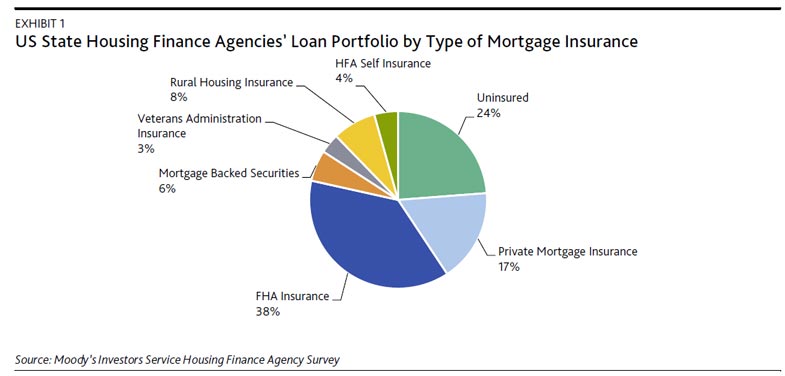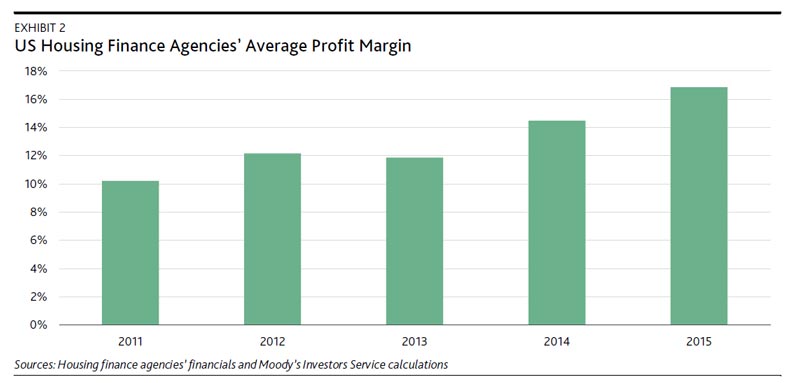Moody’s says on Monday, the US Department of Housing and Urban Development (HUD) announced that the Federal Housing Administration (FHA) will reduce by 25 basis points insurance premiums that borrowers pay on single-family mortgages. The premium cut is credit positive for US state Housing Finance Agencies (HFAs) because it will make FHA-insured mortgage loans more affordable to borrowers and increase HFA loan originations. The premium reduction will apply to new loans closing on or after 27 January.
HFAs are charged with providing and increasing the supply of affordable housing in their respective states for first-time homebuyers. The FHA, unlike other mortgage insurance providers, insure loans with loan-to-value ratios of up to 97%, which is key to the HFA lending base, given that first-time homebuyers often have limited funds for down payments.
The 25-basis-point decrease in the FHA’s insurance premium, which we expect will save new homeowners as much as $500 a year, also increases the competitiveness of HFA mortgage products. A lower FHA cost will attract more borrowers and stimulate stronger FHA loan originations at a time when mortgage interest rates are rising. As of 30 June 2016, FHA mortgage insurance provided the biggest share of the insurance on HFA pools, constituting approximately 38% of Moody’s-rated HFA whole-loan mortgages (see Exhibit 1), compared with 17% of mortgages utilizing private mortgage insurance.
HFA portfolio performance will strengthen because more loans will benefit from FHA insurance coverage. FHA insurance offers the deepest level of protection against foreclosure losses relative to other mortgage insurers because they cover nearly 100% of the loan principal balance plus interest and foreclosure costs. Additionally, the FHA provides the strongest claims-paying ability relative to private mortgage insurers. Although private mortgage insurers maintain ratings of Baa1 to Ba1, FHA insurance is backed by the US government.
The reduced FHA premiums will also benefit HFA to-be-announced (TBA) loan sales, which are secondary market sales using the Ginnie Mae TBA market. All loans utilizing Ginnie Mae must have US government insurance, and the FHA provides a substantial share of this insurance. Higher TBA sales will increase in HFA margins given that TBA sales have been a major driver of loan production and volume, contributing to an all-time high 17% margin in fiscal 2015, which ended 30 June 2015 (see Exhibit 2).


